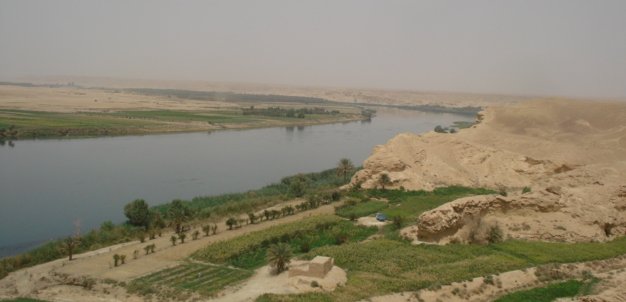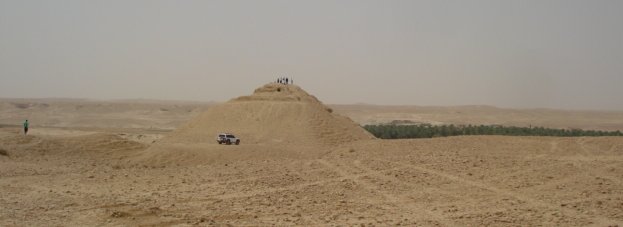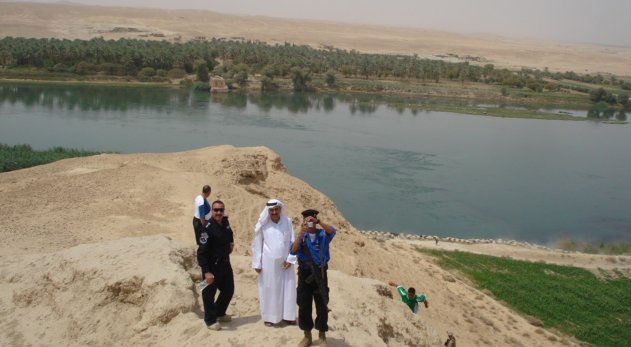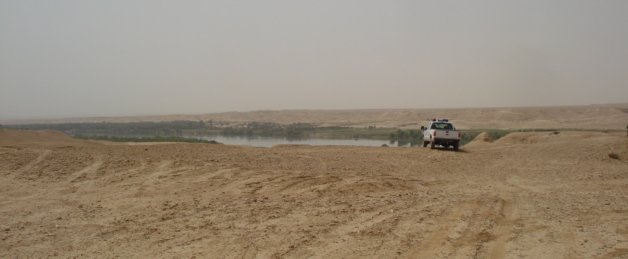
Above – The Euphrates looking north and west.
Our Iraqi friends told us that there was an ancient temple, cursed & haunted by a gin/ghost nearby, so of course we had to go see it. It sounds like the beginning of a ghost movie. You know the story line. The local guys warn us re the ghost. We don’t believe in ghosts and boldly go. The ghost catches everybody one-by-one. It didn’t work out that way because there really are no ghosts, but maybe the gin got us after all. It was a lot farther away than we thought, over wrenching roads. But when we finally got there the view of the Euphrates was beautiful and the place interesting.
Below is the temple mound

Unfortunately, our hosts really didn’t know much about the site. They told me that it was not only that they didn’t know, but that it was unknown. Archaeologists had not properly studied the place. There had been some looting, however, and they did send some shards to Baghdad to be studied. They told me that the shards were Assyrian and said that they were from around 2000 BC. This means they are from the middle bronze age, what they call the old Assyrian period, when the Assyrians were establishing trade routes, but before they established their empire. But I don’t know if the information was reliable.

I studied ancient history, but I really don’t know much re the practical work of archeology. The site looked to me like the remains of an ancient city with maybe a ziggurat making up the highest point. The soil underfoot was not like the nearby soil. My guess (and it is only a guess) is that this is a multi-layered ancient city. Around here, they built with mud brick. When the bricks wore out and the city filled with trash, they simply leveled the buildings and built on top. Over the course of centuries, the cities rose about the neighboring landscape. Archeologists can dig into the mounds and date the artifacts according to layers. Ancient Troy had nine layers. When Heinrich Schliemann dug into the mound, he thought he found Priam’s treasure. He was mistaken – wrong level – but he did open the site to further exploration.
Below – this guy was interested in history and told us what local people knew re the place.

Someday, I suppose, they will excavate this mound. It doesn’t seem like a very important place, but in ancient history you never know. Sometimes seemingly small discoveries cause paradigm shifts in how we view history. I saw lots of shards of pottery, pieces of bone and what looked like a shearing knife, but I have no idea if these things are ancient remains, the debris of somebody’s goat grab from last year or some of each.

Someday, I suppose, they will excavate this mound. It doesn’t seem like a very important place, but in ancient history you never know. Sometimes seemingly small discoveries cause paradigm shifts in how we view history. I saw lots of shards of pottery, pieces of bone and what looked like a shearing knife, but I have no idea if these things are ancient remains, the debris of somebody’s goat grab from last year or some of each.
